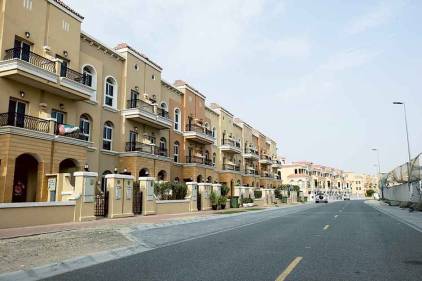Once limited to the high-end clusters, the softening is percolating down as well
Check out areas in Dubai that are seeing significant new supply of homes between now and the next two years. Your lower rent options are more likely to be found there.
But going forward some of the pressure on rents would start being felt by locations outside of these neighbourhoods. “No area or property type is immune to this trend,” said Lynette Abad, Head of Property Monitor at the consultancy Cavendish Maxwell.
“Areas with more supply are obviously impacted higher — but other established, mid-market locations are also affected as consumers are shifting and opening their options to areas they never considered before. With new supply coming into the suburban communities, we are seeing tenants shift from established communities to like-for-like product in suburban communities at a cheaper rent.
“In addition, the majority of the suburban areas now have facilities, connecting roads and amenities sought after by the general public, including malls and recreational facilities.”
So, where exactly should budget-conscious tenants be headed? Apartment rents are lower in Jumeirah Village Circle (JVC) compared to those in Business Bay or JLT. According to Property Monitor’s supply tracker, more than 3,000 units are scheduled to be completed in JVC by year-end.
“Of course, the “materialisation rate” of what will actually be completed will be much lower,” said Abad. “With more supply coming, rental rates and terms will only get more competitive and favourable for the tenant. Also, we are even seeing high quality apartments like the Belgravia in JVC available at a lower rent than a Business Bay apartment.”
Jumeirah Village Circle is one option, and so is Dubai Sports City. Between these two locations, the current capacity is 19,000 homes. (It’s anybody’s guess as to how many of these are rented out and how many occupied by end users.)
“JVC, Dubai Sport City and International City have all seen rents weaken with JVC weakening the most,” said David Godchaux, CEO of Core Savills. “(Interestingly) sales prices in this area have had a relative increase.
“New stock is increasing competition by increasing the options available to tenants. But a lot of the new stock being launched will only become available in several years. We certainly expect the supply coming at the lower end of the price spectrum to exert negative pressure on rents by 2020, if demographic growth is not sufficient to aid absorption.”
Outside of these three areas, recently completed clusters in Dubailand have absorbed rental demand from neighbouring areas and playing their part in contributing to the broader decline in rentals. The “Mira” community in Reem, for instance, absorbed some of the rental demand from Springs and Arabian Ranches, according to Godchaux.
|As Mira is an Emaar product launched at a relatively lower entry point, tenants do not mind compromising on location for rents. Other Dubailand clusters such as Remraam have also absorbed some demand from Dubai Sports City, Jumeirah Village and Dubai Silicon Oasis.”
And down the road — metaphorically speaking — Dubai South looms to set its own pressure points on what the rest of the city can charge as rents.
Dubai’s high-end neighbourhoods have felt the rental pinch the most
According to Core Savills data, Dubai’s original freehold destinations have had quite a bit of rental dip. The Greens cluster has seen declines of up to 12 per cent since January 2016, while for the Palm, it was 11 per cent. The DIFC residential towers have dropped 9 per cent, according to Core, while those in the Downtown and Dubai Marina both saw contractions of 8 per cent apiece.
All rights reserved to the initial publisher for Gulf News.
Collected and published by Arms &McGregor International Realty® editorial team. Get in touched with us at [email protected]

